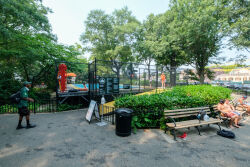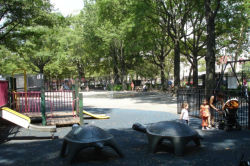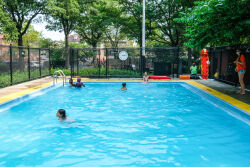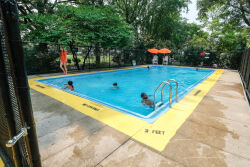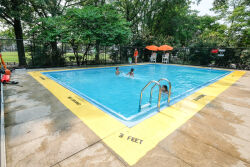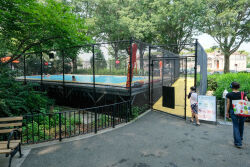Lindower Park
Lindower Park
This park honors Alex Lindower (d. 1965) a community activist in the Mill Basin section of Brooklyn. An attorney by profession, Lindower spent much of his time working to make the area a more desirable and livable neighborhood. His efforts are still visible today.
He convinced the City Council to fund stop lights and traffic signals which made the neighborhood’s circular streets safer to cross. He successfully lobbied against the construction of a Sanitation Disposal Unit. Lindower also organized many community groups in the area including the Geritson Beach Veterans Association. He was a member of the Grand Street Boys Association, the Brighton Beach Chamber of Commerce, and the Knights of Pythias. Lindower participated in charity work with the Chronic Disease Hospital and the Beth Jacobs Girls Yeshiva and served as the Executive First Vice-President of the Flatbush Parks Civic Association.
Originally inhabited by the Canarsie Indians, Mill Basin was known as Equendito, meaning ‘broken lands,’ for the many inlets and islets of Jamaica Bay. Colonists John Tilton, Sr. and Samuel Spicer purchased the land in 1664. Mills were soon built to take advantage of the tidal creeks, thus the current name for this area. Mill Basin became incorporated into the township of Flatlands, but remained rural until 1890. That was the year that Robert L. Cooke’s nearby lead-smelting plant led the way for the development of many industrial plants by the early 1900s. Despite the inroads of heavy industry, the main resource of the area was still shellfish.
The periods before and after World War II saw a decrease in industry and a large increase in residential development. The 1920s ushered in the construction of frame houses on 20’ by 100’ plots. The Brooklyn highway system connected the Mill Basin area with the rest of Brooklyn in the 1940s. The 1950s led to the construction of brick houses and two-story co-ops. In the middle of the 20th century, this neighborhood was just beginning to emerge as a residential area.
The City acquired this parkland in 1959, transferring it to Parks in 1963. Local Law named Lindower Park, bounded by 60th Place, Strickland, and Mill Avenues, in 1965. In 1991, the park received $700,000 for new pavements, fencing, basketball courts, Chrystie-Forsyth benches and colorful play equipment. In addition to the new equipment, the park contains game tables, drinking fountains, handball courts, swings, a shower basin, flagpole, and turtle animal art. The park also features two full size baseball fields and the playground is beautified by oaks (Quercus spp.) and London planetrees (Platanus x acerifolia).
Check out your park's Vital Signs
Clean & Safe
Green & Resilient
Empowered & Engaged Users
Share your feedback or learn more about how this park is part of a
Vital Park System

